Executive Summary
South Africa’s data center market represents the largest and most sophisticated digital infrastructure ecosystem on the African continent. As of 2024-2025, the market is valued at approximately $2.16 billion and projected to reach $3.40 billion by 2030, with existing capacity of approximately 300MW and an additional 200MW under development. Rather than 100 separate operators, the market is characterized by a moderately consolidated structure dominated by major colocation providers, telecommunications companies, and hyperscale operators.
The country accounts for approximately two-thirds of Africa’s total data center capacity and serves as the primary gateway for cloud services, connectivity, and digital transformation initiatives across Sub-Saharan Africa.
Market Overview
Total Market Capacity (2024-2025):
- Existing operational capacity: ~300MW
- Upcoming capacity (by end of 2025): ~200MW
- Total IT load when fully developed: ~500MW
- Number of facilities: 50+ colocation data centers
- Market value: $2.16 billion (2024)
Geographic Distribution:
- Johannesburg/Gauteng: ~75% of capacity (dominant hub)
- Cape Town: ~15% of capacity
- Durban: ~5% of capacity
- Other cities: ~5% (Centurion, Port Elizabeth, etc.)
Top Tier Data Center Operators
1. Teraco Data Environments (Digital Realty)
Ownership Structure:
- Majority owner (55%): Digital Realty (NYSE: DLR)
- Minority stakeholders (45%): Consortium including Berkshire Partners, Permira, van Rooyen Group, Columbia Capital, Stepstone Ventures, and Teraco Connect Trust
- Acquisition value: $3.5 billion (2022)
Capacity & Facilities:
- Total operational capacity: 104MW (as of 2024)
- Total planned capacity: 187MW
- Number of facilities: 8 data centers across South Africa
- Market position: Largest data center operator in Africa
Key Facilities:
- Isando Campus (JB1, JB3, JB5, JB7)
- Current capacity: 70MW
- Whitespace: 32,000 sq m
- Expansion: JB7 (40MW) under construction, expected 2026
- Total campus capacity planned: 110MW
- Location: Ekurhuleni, east of Johannesburg
- Bredell Campus (JB2, JB4)
- Current capacity: 63MW
- Whitespace: 21,000 sq m
- Total area: 97,000 sq m
- Location: Ekurhuleni
- Features: Rainwater harvesting, closed-loop cooling
- Cape Town Campus (CT1, CT2)
- Current capacity: 25-30MW
- Expansion: 31MW under development
- Locations: Rondebosch and Brackenfell
- CT1 whitespace: 2,500 sq m (3MW IT load)
- Durban Facility
- Smaller capacity facility
- Recent expansion completed
- Strategic coastal connectivity
Notable Features:
- Owns freehold to 6 of 7 data centers
- Land adjacent to Johannesburg and Cape Town campuses supporting 93MW additional capacity
- 600+ customers served
- Created NAPAfrica (neutral Internet Exchange Point)
- Investment commitment: $877 million for 4 new facilities (2025-2026)
- 120MW solar PV power plant under construction in Free State
2. Vantage Data Centers
Ownership Structure:
- Private company backed by DigitalBridge and Silver Lake
- $9.2 billion equity investment completed (recent)
- Operates across 5 continents, 18+ markets
Capacity & Facilities:
- Total planned capacity in South Africa: 100MW
- Investment: $1+ billion committed to South African operations
Key Facilities:
- JNB1 – Johannesburg I Campus (Waterfall City, Midrand)
- Total campus capacity: 80MW (when fully developed)
- Phase 1 (JNB11): 16MW operational (July 2022)
- Building size: 130,000 sq ft (12,000 sq m)
- Phase 2: 32MW
- Phase 3: 32MW
- Total whitespace: 650,000 sq ft (60,000 sq m)
- Land area: 30 acres (12 hectares)
- Location: 30km from OR Tambo International Airport
- JNB2 – Johannesburg II Campus (Isando, Ekurhuleni)
- Phase 1 capacity: 20MW
- Building size: 355,000 sq ft (33,000 sq m)
- Status: Operational (mid-2024)
- Location: 17km from JNB1, near NAPAfrica
- Features: Two-story facility, closed-loop chilled water cooling
Notable Features:
- 20-year renewable energy PPA with SolarAfrica
- N+1 redundancy across all systems
- Closed-loop chilled water system with economizers
- Average density: 300W/SF
3. Africa Data Centres (Cassava Technologies)
Ownership Structure:
- Parent company: Cassava Technologies
- Founded by: Strive Masiyiwa (Executive Chairman)
- Operates across 14 countries in Africa
- Part of larger telecommunications and technology group
Capacity & Facilities:
- Total operational capacity: 30-35MW in South Africa
- Expansion investment: $500 million (Africa-wide, 50% allocated to SA)
- Number of facilities in SA: 3 operational, 1 planned
Key Facilities:
- JHB1 – Midrand Campus
- Whitespace: 8,500 sq m
- IT load capacity: 20MW
- Features: 2N UPS topology at rack level
- Backup power: 48 hours minimum
- Interconnection: Connected to JINX (Johannesburg Internet Exchange)
- JHB2 – Samrand (Centurion)
- Whitespace: 6,000 sq m
- IT load capacity: 10MW
- Originally built: 2010 by Standard Bank
- Acquired and expanded: 2019
- CPT1 – Cape Town (Elfindale)
- Whitespace: 3,600 sq m
- IT load capacity: 10MW
- Cloud connectivity: Direct access to Azure, Google Cloud, AWS
- Features: Carrier and cloud neutral
- JHB3 (Planned)
- Future capacity: 50MW
- Timeline: Within next 2 years
- Will be largest ADC facility in South Africa
Notable Features:
- Largest independent Pan-African terrestrial fiber network (300+ towns)
- ISO 27001 certified, PCI DSS compliant
- Solar power installations across all facilities
- Connected to 50+ carriers
- RMB financing: ZAR 2 billion ($109 million) secured for expansion
4. NTT Global Data Centers (NTT Ltd)
Ownership Structure:
- Parent: NTT Corporation (Japan)
- Global revenue: ¥13.1 trillion (~$95 billion)
- Operates 150+ data centers in 20+ countries
Capacity & Facilities in South Africa:
- Total capacity: Estimated 30-40MW across multiple facilities
- Geographic presence: 5 provinces (Gauteng, KwaZulu Natal, Western Cape, Eastern Cape, Free State)
Key Facilities:
- Midrand Facility (Johannesburg 1)
- Whitespace: 6,200 sq m
- IT load capacity: 12MW
- Total power capacity: 20MVA
- Power supply: 20kV
- Features: Dual UPS systems, N+1 generator redundancy
- Additional Locations:
- Centurion
- Rosebank (multiple sites)
- Bryanston
- Other strategic locations
Notable Features:
- Strong enterprise and government client base
- Carrier-neutral connectivity
- State-of-the-art security systems
- AI-ready data center infrastructure
- INX-ZA peering availability
5. Equinix, Inc.
Ownership Structure:
- Public company (NASDAQ: EQIX)
- Entered African market via MainOne acquisition ($320 million, 2021)
- First South African facility: 2024
Capacity & Facilities:
- Investment in South Africa: $160 million (JN1 facility)
- Planned expansion: $390 million over 5 years across Africa
Key Facility:
- JN1 – Johannesburg International Business Exchange (IBX)
- Location: Germiston area
- Phase 1 capacity: 4MW
- Phase 1 space: 20,000 sq ft (1,900 sq m)
- Cabinets: 700 (initial phase)
- Full build-out capacity: 20MW
- Full build-out space: 100,000 sq ft (9,515 sq m)
- Full build-out cabinets: 3,475
- Status: Opened October 2024
- Features: Liquid cooling support
Notable Features:
- Three development phases planned
- Integration with Platform Equinix global network
- First IBX facility in Africa
- Interconnection to MainOne facilities in West Africa
6. Open Access Data Centres (OADC)
Ownership Structure:
- Part of WIOCC Group
- Focus on retail colocation services
- Pan-African operator
Capacity & Facilities:
- Total capacity: Estimated 8-12MW
- Recent expansion: 4MW, 600 racks added (Q1 2024)
Key Facility:
- Isando Facility (Johannesburg)
- Current capacity: 4MW+
- Rack space: 600+ racks
- Recent expansion: Phase 2 completed Q1 2024
- Focus: Retail colocation
Notable Features:
- Carrier-neutral connectivity
- Retail-focused service model
- Flexible colocation options
- Strategic Johannesburg location
7. Business Connexion (BCX) – Telkom Subsidiary
Ownership Structure:
- Subsidiary of Telkom SA SOC Ltd
- Enterprise ICT division
- CEO: Jonas Bogoshi
- Workforce: 6,300 employees
Capacity & Facilities:
- Number of Tier IV data centers: 3
- Market position: Largest market share in South African data center services (historically)
Key Facilities:
- BCX National Data Centre 1 – Tier IV
- Tier certification: Tier IV
- Location: Centurion headquarters
- BCX National Data Centre 2 – Tier IV
- Tier certification: Tier IV
- Crown Mines Data Centre
- Tier certification: Tier II
- Telkom Hartbeeshoek HBDC
- Tier compliance: Tier III
- Location: Near Pretoria
- Commissioned: 2009
- Telkom Centurion Hub (HUB DC)
- Tier certification: Tier III
- Location: Centurion, Gauteng
- Commissioned: 2002
Notable Features:
- Strong government and enterprise client base
- Alibaba Cloud partnership (Africa Local Public Cloud service)
- Integrated telecommunications services
- Legacy infrastructure advantage
8. Digital Parks Africa (Pty) Ltd
Capacity & Facilities:
- IT load capacity: 15MW
- Segment: Massive data center category
Notable Features:
- Specialized in large-scale facilities
- Active in massive-size DC development
- Focus on enterprise and cloud services
Telecommunications Provider Data Centers
9. MTN South Africa
Facilities:
- Gallo Manor Data Centre (Johannesburg)
- Newlands Data Centre
- Support for MTN’s network infrastructure
- Enterprise hosting services
- 5G ultra-range maritime network (launched September 2024 at Mossel Bay)
Notable Features:
- Integrated with mobile network operations
- Enterprise cloud services
- Strategic network nodes
10. Vodacom Business
Facilities:
- Johannesburg Data Center
- Cutting-edge facility supporting digital transformation
- Enterprise-focused services
- Cloud connectivity
Notable Features:
- Telecommunications integration
- Business-focused solutions
- Network interconnection
Emerging and Specialized Operators
11. Internet Solutions (Liquid Intelligent Technologies)
- Part of Cassava Technologies group
- Network services integration
- Enterprise connectivity
12. Xneelo (Pty) Ltd
- JNB1 Samrand facility
- World-class, carrier-neutral
- Strategic Johannesburg location
- Focus on Tier I & II segments
- Primary operator for SME market
13. Paratus
- Regional presence
- Namibian-based with SA operations
- Telecommunications integration
14. CipherWave
- Specialized services
- Cybersecurity integration
- Enterprise focus
15. New Telco
- Carrier-focused vendor neutral
- Flexible OPEX model
- Secure facility management
Hyperscale Cloud Provider Investments
16. Microsoft Azure
- Investment commitment: $300 million (by 2027)
- Multiple data centers planned
- Self-built facility expected: 2027
- Cloud regions operational in Johannesburg
- Focus: AI and cloud infrastructure
17. Google Cloud Platform
- Johannesburg cloud region: Launched January 2024
- First cloud region in Africa
- Equiano subsea cable investment ($400M, 120 Tbps capacity)
- Landing point: Cape Town
18. Amazon Web Services (AWS)
- Investment commitment: $1.66 billion (by 2029)
- Cloud infrastructure expansion
- Edge computing services
- Enterprise and government focus
19. Huawei Cloud
- Three data centers operational in South Africa
- AI cloud adoption initiatives
- Strong presence across Africa
- $3 million UBA cloud storage contract (September 2024)
20. Oracle Cloud
- Cloud infrastructure deployed
- Enterprise database services
- Regional expansion plans
21. IBM Cloud
- Facilities deployed in South Africa
- Enterprise solutions
- Hybrid cloud services
22. Alibaba Cloud
- Exclusive partnership with BCX
- Africa Local Public Cloud (ALP)
- Johannesburg-based facilities
Enterprise and Government Data Centers
23. Eskom
- Simmerpan Data Center (National Control Centre, Germiston)
- Critical national infrastructure
- Grid monitoring and control
- Megawatt Park (Sunninghill, Sandton)
- Head office IT infrastructure
24. Standard Bank
- Built original JHB2 facility (2010)
- Now operated by Africa Data Centres
- Internal data centers for banking operations
25. Other Major Banks
- Nedbank, Absa, FirstRand
- Private data centers for banking operations
- Regulatory compliance infrastructure
Supporting Infrastructure & Services
26. NAPAfrica (Teraco Initiative)
- Neutral Internet Exchange Point (IXP)
- 5 Tbps of traffic milestone reached (March 2025)
- Non-profit organization
- Critical peering infrastructure
27. Johannesburg Internet Exchange (JINX)
- Major internet exchange
- Hosted at Africa Data Centres facilities
- Regional connectivity hub
28. Cape Town Internet Exchange (CINX)
- Western Cape peering point
- Subsea cable connectivity
- Regional interconnection
Market Segmentation Analysis
By Tier Classification
Tier IV (Highest Resilience)
- BCX National Data Centres (3 facilities)
- Premium enterprise services
- 99.995% uptime guarantee
- Estimated capacity: 20-30MW total
Tier III (Standard Enterprise)
- Teraco facilities
- Vantage facilities
- NTT facilities
- Africa Data Centres
- Telkom facilities
- Most colocation providers
- Estimated capacity: 250MW+
Tier I & II (SME Focus)
- Xneelo facilities
- Some retail colocation
- Estimated capacity: 10-15MW
By Service Model
Wholesale Colocation (Large-scale, single-tenant)
- Teraco: 104MW
- Vantage: 100MW (planned)
- Africa Data Centres: 30-35MW
- NTT: 30-40MW
- Digital Parks Africa: 15MW
Retail Colocation (Multi-tenant, flexible)
- OADC: 8-12MW
- Xneelo: 5-10MW
- Equinix: 4-20MW (expanding)
Hyperscale (Cloud providers)
- AWS, Microsoft, Google, Oracle
- Combined estimated: 50-100MW (growing rapidly)
Enterprise (Private data centers)
- Banks, telecommunications, government
- Estimated: 30-50MW
Geographic Distribution Deep Dive
Johannesburg Metropolitan Area (75% of capacity)
Key Locations:
- Midrand – Major hub (Vantage JNB1, Africa Data Centres JHB1)
- Waterfall City – Modern business district (Vantage campus)
- Isando – Industrial area (Teraco, Vantage JNB2, OADC)
- Bredell/Ekurhuleni – Hyperscale cluster (Teraco)
- Germiston – Emerging hub (Equinix JN1)
- Centurion – Telecommunications hub (BCX, Telkom)
- Rosebank – Business district (NTT)
- Bryanston – Enterprise area (NTT)
- Samrand – Colocation cluster (ADC, Xneelo)
Johannesburg Advantages:
- Largest economic hub in Africa
- Strong fiber connectivity
- Proximity to OR Tambo International Airport
- Business concentration
- Network density
- Access to skilled workforce
Cape Town (15% of capacity)
Key Locations:
- Rondebosch (Teraco CT1)
- Brackenfell (Teraco CT2)
- Elfindale (Africa Data Centres CPT1)
Cape Town Advantages:
- Major subsea cable landing point
- 7 subsea cables in Durban and Cape Town
- International connectivity gateway
- Tech startup ecosystem
- Tourism and business hub
- Renewable energy access
Durban (5% of capacity)
Key Facilities:
- Teraco Durban
- MTN facilities
- Telkom infrastructure
Durban Advantages:
- East coast subsea cable access
- Port city connectivity
- Industrial base
- Strategic gateway to Indian Ocean
Other Emerging Locations (5% of capacity)
Port Elizabeth (Gqeberha)
- Smaller facilities
- Regional connectivity
Bloemfontein
- Emerging market
- Central location
Polokwane, Nelspruit, Pietermaritzburg
- Secondary cities
- Edge computing potential
Ownership Patterns & Investment Landscape
International Ownership (Dominant)
- United States: Digital Realty, Vantage, Equinix, Microsoft, AWS, Google, Oracle, IBM
- Japan: NTT Corporation
- China: Huawei, Alibaba
African Ownership
- South African: Teraco (partial), BCX/Telkom, MTN, Vodacom
- Pan-African: Cassava Technologies (Zimbabwe-founded)
Private Equity
- Berkshire Partners
- Permira
- DigitalBridge
- Silver Lake
Investment Trends (2024-2025)
- Total upcoming investment: $1.5-2 billion
- Hyperscale expansion: 60% of new capacity
- Renewable energy integration: Growing priority
- AI infrastructure: Emerging focus (Teraco JB7 with liquid cooling)
Capacity Planning & Future Developments
Confirmed Upcoming Projects (2025-2026)
Teraco
- JB7 (Isando): 40MW – 2026
- Cape Town expansion: 31MW
- Bredell expansion: 30MW
- Total investment: $877 million
Vantage
- JNB1 Phase 2: 32MW
- JNB1 Phase 3: 32MW
- Additional JNB2 phases
Africa Data Centres
- JHB3: 50MW – within 2 years
- JHB1 and JHB2 expansions
- Investment: $250 million (SA portion of $500M Africa total)
Microsoft
- Self-built data center: 26-hectare site
- Timeline: 2027
- Investment: $300 million
Equinix
- JN1 Phase 2: Expansion to 20MW total
- Phases 2-3 development
Power & Energy Considerations
Total Power Requirements:
- Current: ~350MVA
- Future (2026-2027): ~550-600MVA
Energy Sources:
- Eskom grid: Primary source (reliability challenges)
- Renewable energy: Growing (Teraco 120MW solar PV, Vantage PPA with SolarAfrica)
- Backup power: Diesel generators (48+ hours capacity)
- UPS systems: N+1 to 2N redundancy
Sustainability Initiatives:
- Solar power installations
- Water efficiency (closed-loop cooling)
- Rainwater harvesting
- Power Usage Effectiveness (PUE) optimization
- Green building certifications
Connectivity Infrastructure
Subsea Cable Systems Landing in South Africa
Operational:
- SAT-3/WASC (West Africa)
- SAFE (South Africa Far East)
- SEACOM (East Africa)
- EASSy (Eastern Africa Submarine System)
- ACE (Africa Coast to Europe)
- WACS (West Africa Cable System)
- METISS
Under Construction/Planned:
- 2Africa (Meta-backed, largest subsea cable project globally)
- Equiano (Google-backed, $400M investment, 120 Tbps)
- Additional 2+ cables planned through 2025
Terrestrial Fiber Networks
- Liquid Intelligent Technologies: 300+ towns
- Multiple fiber providers across major cities
- Dark fiber availability
- Redundant path diversity
Interconnection Platforms
- NAPAfrica (5 Tbps)
- JINX (Johannesburg)
- CINX (Cape Town)
- Direct cloud on-ramps (AWS Direct Connect, Azure ExpressRoute, Google Cloud Interconnect)
Market Challenges & Opportunities
Challenges
- Power Supply
- Eskom load shedding (though improved)
- Grid reliability concerns
- High electricity costs
- Infrastructure constraints
- Skilled Workforce
- Technical skills shortage
- Competition for talent
- Training requirements
- Regulatory Environment
- Data sovereignty laws
- POPIA (Protection of Personal Information Act) compliance
- Telecommunications regulations
- Land Costs
- Cape Town: $120-140/sq m
- Prime location competition
- Limited expansion space
Opportunities
- Digital Transformation
- Accelerating cloud adoption
- AI and ML workloads
- IoT expansion
- Smart cities initiatives
- Sub-Saharan Africa Gateway
- 1 billion population market
- Undersea cable expansion
- Regional hub positioning
- Cross-border connectivity
- Renewable Energy
- Abundant solar resources
- Wind energy potential
- Government renewable programs
- Corporate sustainability goals
- 5G Deployment
- Edge computing requirements
- Network densification
- Low-latency applications
- MTN, Vodacom, Telkom rollouts
- Government Digitalization
- E-government initiatives
- Public cloud adoption
- Smart nation programs
- Infrastructure investment
Competitive Landscape Analysis
Market Share (Estimated, 2024)
- Teraco (Digital Realty): 28-30%
- Vantage Data Centers: 10-12%
- Africa Data Centres: 8-10%
- NTT Global Data Centers: 8-10%
- BCX (Telkom): 8-10%
- Other operators: 30-34%
Competitive Positioning
Teraco Strengths:
- Largest capacity
- Best-in-class facilities
- Strong ecosystem (600+ customers)
- Network density
- First-mover advantage
- Digital Realty global platform
Vantage Strengths:
- Modern infrastructure
- Hyperscale focus
- Renewable energy commitment
- Rapid expansion
- Global backing
Africa Data Centres Strengths:
- Pan-African network
- Fiber infrastructure integration
- Local ownership component
- Strong expansion capital
NTT Strengths:
- Global brand
- Enterprise relationships
- Multiple locations
- Technical expertise
Equinix Strengths:
- Global interconnection platform
- Brand recognition
- Financial resources
- Platform Equinix ecosystem
Technology Trends
Cooling Technologies
- Air-cooled chillers: Standard across most facilities
- Closed-loop chilled water: Vantage, Teraco
- Hot aisle/cold aisle containment: Widespread
- Liquid cooling: Emerging (Teraco JB7, Equinix JN1)
- Economizers: Temperature-based optimization
- CRAH units: Computer Room Air Handling
Power Systems
- UPS configurations: N+1 to 2N
- Generator backup: N+1 minimum, 48+ hours fuel
- PDUs: Power distribution units at rack level
- On-site substations: 100+ MVA capacity
- Smart power management: DCIM integration
Security
- Biometric access control: Standard
- CCTV surveillance: 24/7/365
- K12-rated fencing: Perimeter protection
- SOC: Security Operations Centers
- Dual authentication: Badge + PIN/biometric
- Mantrap entries: Secure zones
Sustainability
- PUE targets: 1.2-1.4 typical
- WUE: Water Usage Effectiveness near-zero goals
- Solar integration: Growing trend
- Rainwater harvesting: Water management
- Green building certifications: LEED, etc.
Customer Segments
Enterprise (40% of demand)
- Banking and financial services
- Insurance companies
- Retail chains
- Manufacturing
- Healthcare
Telecommunications (25% of demand)
- Mobile network operators
- ISPs
- Fiber providers
- Content providers
Cloud & Content (20% of demand)
- Hyperscalers (AWS, Azure, Google)
- CDN providers
- SaaS companies
- Gaming companies
Government (10% of demand)
- National departments
- Provincial governments
- Municipalities
- State-owned enterprises
Other (5% of demand)
- Education institutions
- Research organizations
- Startups
- SMEs
Regulatory & Compliance Framework
Key Legislation
- POPIA (Protection of Personal Information Act)
- Data protection requirements
- Cross-border data transfer rules
- Consent management
- ECTA (Electronic Communications and Transactions Act)
- Digital signatures
- E-commerce framework
- RICA (Regulation of Interception of Communications Act)
- Telecommunications monitoring
- Lawful interception
- Critical Infrastructure Protection
- National Key Points designation
- Security requirements
Industry Standards
- ISO 27001 (Information Security)
- PCI DSS (Payment Card Industry)
- ITIL (IT Service Management)
- Uptime Institute Tier certifications
- SOC 2 compliance
B-BBEE Considerations
- Black Economic Empowerment requirements
- Teraco: Level 2 contributor (125% procurement recognition)
- Local ownership components
- Skills development obligations
Economic Impact
Direct Economic Contribution
- Capital investment (2024-2026): $2+ billion
- Job creation: 2,000+ direct jobs
- Annual revenue: $2.16 billion (2024)
Indirect Benefits
- Digital economy enablement (6% of SA GDP)
- Cloud services growth
- Telecommunications infrastructure
- Technology sector development
- Skills development
Regional Impact
- Sub-Saharan Africa connectivity hub
- Cross-border digital services
- Regional economic integration
- Technology transfer
Future Outlook (2025-2030)
Capacity Projections
- 2024: ~300MW operational
- 2025: ~370-400MW
- 2026: ~450-480MW
- 2030: 962MW (projected)
- CAGR: 13.94% (2025-2030)
Market Value Projections
- 2024: $2.16 billion
- 2025: $2.33 billion (estimated)
- 2027: $2.90 billion (estimated)
- 2030: $3.40 billion
- CAGR: 7.85% (2025-2030)
Emerging Trends
- AI Infrastructure: Dedicated AI data centers, liquid cooling
- Edge Computing: Distributed facilities, 5G support
- Renewable Energy: Solar/wind integration, battery storage
- Modular Design: Faster deployment, scalability
- Automation: Lights-out operations, AI-driven management
Strategic Priorities
- Sustainability and carbon neutrality
- Energy independence and reliability
- Skills development and localization
- Regional expansion (Kenya, Nigeria)
- Technology innovation and differentiation
Conclusion
South Africa’s data center market, while not comprising 100 distinct major operators, represents a sophisticated, rapidly growing ecosystem dominated by approximately 20-25 significant operators across colocation, cloud, telecommunications, and enterprise segments. The market is characterized by:
✓ Strong international investment from global leaders ✓ Strategic geographic position as Africa’s digital gateway ✓ Robust infrastructure with Tier III/IV facilities ✓ Significant capacity expansion (~200MW upcoming) ✓ Growing sustainability focus with renewable energy integration ✓ Diverse customer base across enterprise, telco, and clou
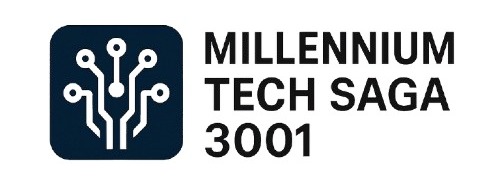

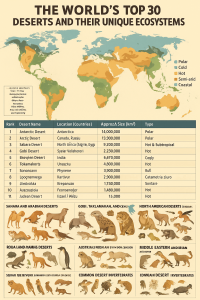
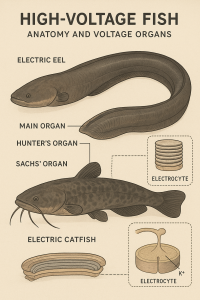
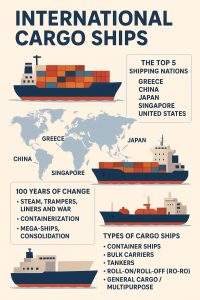
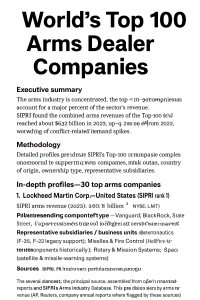

Be First to Comment